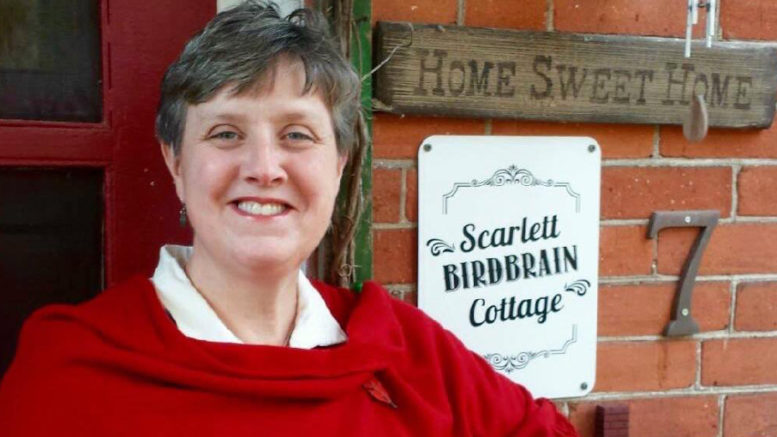Laurie Snider
Notes from the Nest
‘Twas the night before Christmas, when all through the house not a creature was stirring, not even a mouse. The stockings were hung by the chimney with care, in hopes that St. Nicholas soon would be there…’ begins the charming and much- celebrated poem millions of people across the globe are intimately familiar with. Many read and reread it, as part of a family tradition each Christmas Eve, in joyful anticipation of a rather chubby elf, clad in a red suit, preparing to drop down their chimneys, with a sack full of presents.
The story was first published in the Troy Sentinel on Dec. 23, 1823, by Clement C. Moore, although there is some debate, as to whether the true author of the piece, was Henry Livingston Jr., a distant cousin of Moore’s wife. It has become a beloved tale of a visit from St. Nicholas, on Christmas Eve. With its delightful illustrations, and enchanting rhyme, it’s hard not to be captivated by it.
When our children were little, it was the last thing we’d do together, after setting out the milk and cookies and settling them into bed, for their long winter’s nap. This was usually followed by regular checks on them, for the next 90 minutes, to see if they were truly asleep, so we could begin the mad scramble — of which many parents are familiar — of assembling some intricate play structure or toy before morning. Fun times!
Unfortunately, now, it’s not uncommon for Santa to get a bad rap, as he commonly gets lumped in with commercialism, materialism and all other -isms that can give Christmas a bad name. St. Nicholas was born 1738 years ago, in what is now Turkey. Venerated for his charity and kindness, he was said to spend his time traveling the countryside aiding the sick and poor, giving away all of his acquired wealth.
One famous legend about him tells the tale of a poor man with three daughters, who was unable to provide dowries for them so they could be married. Nicholas secretly dropped bags of gold down the chimney, one for each, which fell into their stockings, which were drying by the fire. His generous act, saved them from a life of hardship.
In December 1773, Dutch families that had immigrated to the United States, began to honour the anniversary of his death. His Dutch name, was Sinter Klaas and it’s not difficult to imagine, how the name Santa Claus evolved from there. In 1881, Thomas Nast, a political cartoonist, inspired by Moore’s poem, created the first likeness of the Santa that we associate with Christmas festivities today. He was the one, who gave Santa his bright red suit, his home and workshop at the North Pole, and his elves.
As early as the 1820s, stores began advertising for Christmas and by the 1940s, Santa was frequently used in these ads. Not long after that, as another way of drawing potential customers into their stores, live Santas were brought in to greet children and their parents. He was even used by the Salvation Army as a mascot to generate funds to provide meals for the needy, beginning in the 1890s.
Similar examples of kindly, big-hearted figures, like St. Nicholas, appear in other countries as well. Kris Kringle in Germany, Father Christmas in England and Pere Noel in France, to name a few.
Admittedly, the true message of Christmas, of love and peace on earth, goodwill toward man, can get lost in the daily onslaught of messages we receive, to buy, buy, buy. It seems the example that St. Nicholas and his future iteration, Santa Claus, were setting was to give, give, give. Happily, when I look around, I see many examples of just that.
According to Bruce MacDonald, of Imagine Canada, Canadians give about $12 billion to charities annually. Forty percent of that, over $5 billion, occurs in late November and December. Recently, a community Christmas concert in Newburgh raised over 19,000 dollars, to help children in our community. Photos of overflowing food boxes, collected for our local food banks, regularly show up on social media.
Stories about toys, donated to emergency services workers and other community groups, to be distributed so many children will receive a gift for Christmas, have been highlighted in the media. The Sandy Pines Wildlife, Centre recently met their goal, to rebuild their new barn and aquatic centre and stories of altruistic families and children, donating to the humane society, abound. These are just a few examples of our fellow citizens, demonstrating courtesy, decency, generosity and goodwill.
There will always be causes to support and people in need, but it seems to me, after almost two centuries, the benevolent spirit of St. Nicholas, is still alive and well. Thank goodness.
Merry Christmas!

